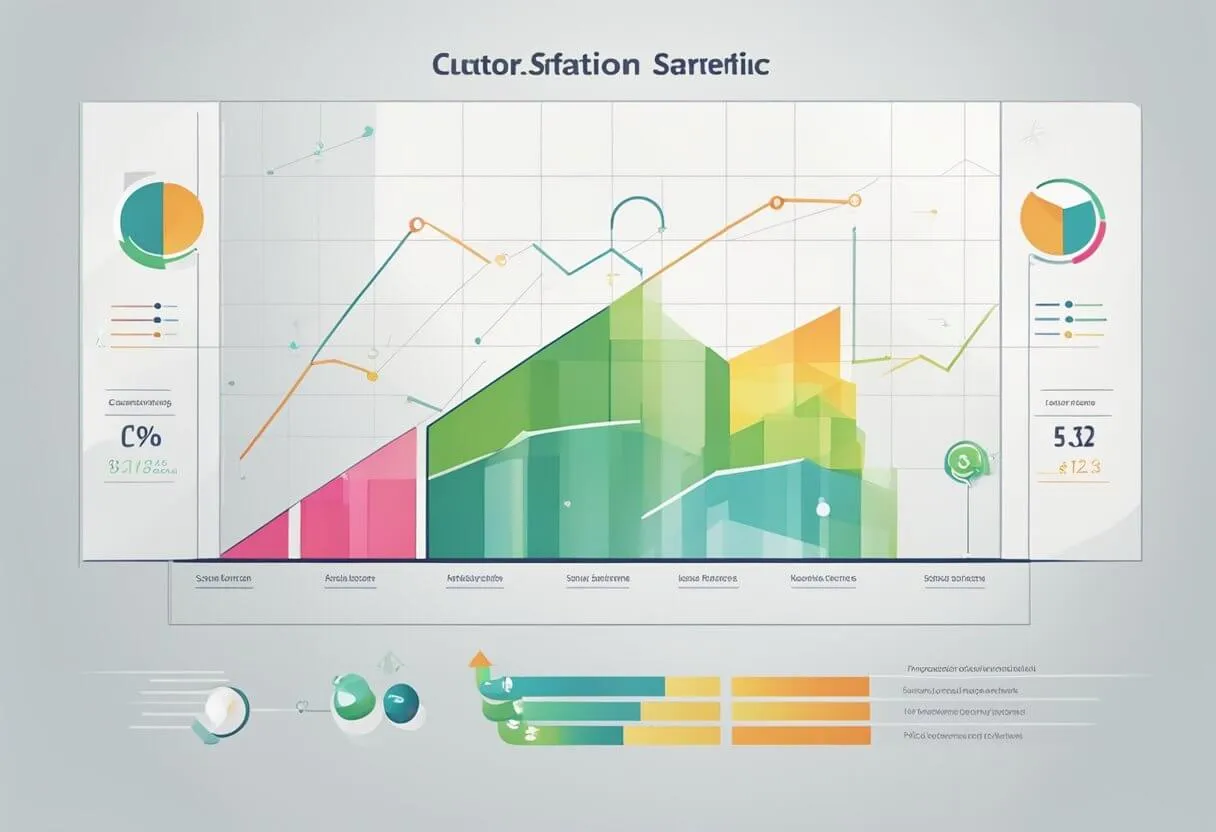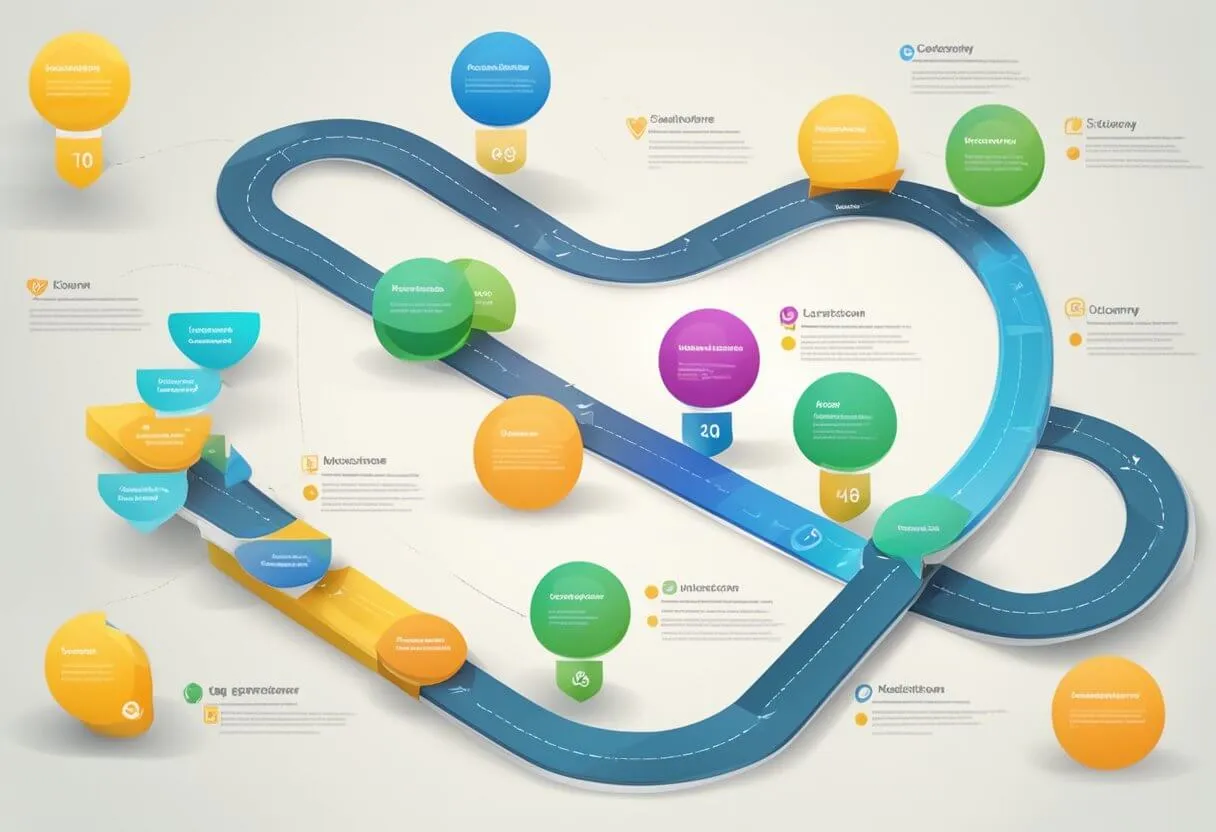
Customer Satisfaction Measurement: A Comprehensive Guide to Effective Evaluation
Customer satisfaction measurement is a crucial aspect of any successful business. It helps companies understand how well they are meeting their customers’ needs and expectations, enables them to gauge the effectiveness of their products and services, and provides valuable insights into areas that require improvement. An accurate assessment of customer satisfaction levels can also assist organizations in retaining customers, reducing customer churn, and ultimately increasing overall profits.
There are numerous ways to measure customer satisfaction, ranging from simple surveys to more advanced analytical methods. Commonly used approaches include customer satisfaction score (CSAT), which uses direct feedback from customers to rate their experience after an interaction or purchase, and net promoter score (NPS), a metric that gauges the likelihood of a customer referring a friend or colleague to the business. Other methods to measure customers satisfaction, like customer effort score (CES) and more qualitative approaches, can also provide essential insights for businesses to thrive and grow.
When implementing customer satisfaction measurement tools and strategies, it is vital for companies to take a methodical approach. This includes defining clear goals, choosing the appropriate metrics and survey methods, and systematically analyzing the data collected. With the right approach, businesses can optimize their customer experiences and build long-lasting relationships with their clientele.
Fundamental Measures of Customer Satisfaction

Customer satisfaction is a crucial aspect of any business, as it can significantly impact customer loyalty, brand reputation, and financial performance. There are several fundamental methods and metrics to gauge and improve customer satisfaction. This section will cover the key measures that can help businesses track and evaluate their customers’ experiences.
Direct and Indirect Feedback
One of the primary sources of insight into customer satisfaction is through direct and indirect feedback. Direct feedback may include face-to-face interactions, phone calls, or emails, collecting customer feedback, while indirect feedback encompasses online reviews and social media mentions. By monitoring both direct and indirect feedback, businesses can identify areas for improvement, potential customer dissatisfaction, and trends in customer needs.
Some popular satisfaction metrics include:
-
Customer Satisfaction Score (CSAT): An overall assessment of a customer’s satisfaction with a product or service, typically measured on a scale of 1-5 or 1-10.
-
Net Promoter Score (NPS): This metric gauges how likely a customer is to recommend a business to others on a scale of -100 to 100. NPS is often used to predict customer loyalty and satisfaction.
-
Customer Effort Score (CES): CES measures how easy it is for customers to obtain the desired outcome with a company’s product or service. Lower scores indicate better experiences and higher satisfaction levels.
These metrics, along with other customer satisfaction indicators like Customer Satisfaction Rating and Customer Satisfaction Index, can provide a comprehensive understanding of customer sentiment.
Online Surveys and Data Interpretation
Online surveys have become an essential tool for collecting customer insights and evaluating satisfaction levels. Various types of surveys can be utilized to collect data and assess different aspects of the customer experience, including post-purchase follow-ups, annual satisfaction surveys, and ad-hoc feedback requests.
When designing a survey, it is important to:
-
Define your goals.
-
Choose the survey format and questions.
-
Determine the survey trigger (e.g., after purchase, account anniversary, etc.).
-
Select the survey medium, such as email, website pop-up, or social media platform.
Once the customer satisfaction survey data has been collected, it is crucial to analyze the results and identify trends, areas for improvement, and insights into customer behavior. By continuously monitoring customer satisfaction metrics like CSAT, CES, and NPS, businesses can make informed decisions, enhance the customer experience, and ultimately, boost customer lifetime value.
Maximizing Customer Satisfaction

In today’s competitive market, maximizing customer satisfaction is essential for businesses to thrive. Companies may strive to increase customer satisfaction through various means to ensure happy customers and loyal clientèle. In this section, we’ll explore some strategies to enhance customer satisfaction.
One of the most crucial factors in improving customer satisfaction is understanding the needs and expectations of how satisfied customers are. A company must always be ready to listen to the customers’ feedback and make the necessary changes to its products and services. Catering to these needs will result in satisfied and highly satisfied customers.
Implementing a proactive customer service approach that promptly addresses customers’ concerns is essential to maintaining customer satisfaction. Utilize a service console that enables agents to connect with customers across multiple channels – phone, email, text, chat, messenger apps, or social media. This multichannel approach ensures that customer complaints are attended to regardless of their chosen platform.
To further enhance customer satisfaction, businesses should focus on the following elements:
-
Personalization: Tailoring the customer experience to meet their individual preferences promotes a sense of importance and leads to happier customers.
-
Timeliness: Swiftly resolving any issues or concerns demonstrates that the company values its clients’ time and priorities.
-
Follow-Up: Regularly checking in with customers to ensure they’re enjoying their experience with the product or service is vital for maintaining customer happiness.
Tracking customer satisfaction metrics such as client referrals, net promoter scores, and overall customer satisfaction surveys is essential for measuring user satisfaction. Analyzing these metrics enables businesses to identify areas of improvement and implement necessary changes to maintain customer happiness.
In conclusion, maximizing customer satisfaction should be a top priority for businesses. By continually working to achieve higher customer satisfaction, through understanding their needs, delivering personalized experiences, and providing exceptional customer service, companies can foster long-lasting relationships with their clients and become successful in their respective industries.
Customer Journey and Interaction Points

The customer journey is a vital aspect of measuring customer satisfaction as it reveals how customers interact with a company throughout their entire experience. This process starts with the customer’s interest in a product or service and continues through their usage, issue resolution, and retention. By evaluating the customer journey, businesses can identify key touchpoints, optimize their customer support strategy, and improve overall customer experience.
Customer interactions play a significant role in determining satisfaction levels. Upon encountering any issues or queries, customers typically reach out to the customer support team. Prompt and effective assistance provided by the customer service team is crucial in maintaining a healthy and satisfied customer relationship. Monitoring these interactions allows businesses to detect potential concerns, address them, and refine their support strategy to better serve their customers.
Touchpoints are the various moments in which customers interact with a company, such as website visits, social media engagements, phone calls, and in-store experiences. Understanding these touchpoints is essential for assessing customer data and recognizing opportunities to enhance each stage of the customer journey. Analyzing the customer journey touchpoints data can provide valuable insights into customer preferences, expectations, and pain points, in turn empowering businesses to make more informed decisions.
Strong customer success initiatives actively promote customer satisfaction by focusing on their needs and goals. Proactive support from the customer service team, tailored offerings, and personalized experiences can drive customer success and foster long-term relationships with loyal customers.
By comprehending and acting upon essential elements like customer journeys, interaction points, and customer data, businesses can improve their customer experience, bolster customer success, and strengthen their customer relationships — all of which contribute to a higher level of customer satisfaction.
Understanding and Addressing Challenges

Customer satisfaction is an integral aspect of any business; however, addressing challenges like customer complaints, unhappy customers, and churn rates can be daunting. This section will discuss various challenges and provide insights on how to tackle them effectively.
One common challenge is dealing with dissatisfied or unsatisfied customers, who might have specific complaints about a product, service, or experience with a company. It’s crucial to handle these complaints in a timely manner, listening to the customer’s concerns, and offering reasonable solutions. Resolving issues competently can turn unhappy customers into loyal ones and significantly improve brand reputation.
Another notable challenge is monitoring and reducing the churn rate, or the percentage of new customers, who stop doing business with a company within a given period. To effectively address customer churn, it’s essential to identify the root causes. By collecting and analyzing customer feedback, businesses can uncover patterns and discover the primary reasons for dissatisfaction and identify potential areas for improvement.
Maintaining a confident, knowledgeable, and neutral tone when communicating with customers is vital in addressing challenges. Clear communication ensures the customer feels heard and understood, while focusing on finding the best possible solution to their concerns.
In conclusion, understanding and addressing the challenges surrounding customer satisfaction requires businesses to be proactive in engaging with customers, carefully monitoring feedback and making necessary adjustments. By consistently demonstrating a commitment to customer satisfaction, companies can effectively address these challenges and ultimately enhance the overall customer experience.
Frequently Asked Questions
What are the key performance indicators for customer satisfaction?
Key performance indicators (KPIs) for customer satisfaction typically involve measuring factors that contribute to customer experience and loyalty. Some popular KPIs to consider include the Net Promoter Score (NPS), which measures customers’ likelihood to recommend a business, and the Customer Satisfaction Score (CSAT), which is derived from customers’ ratings of their experience. Other indicators may include customer effort score (CES), which measure customer satisfaction, retention rate, and customer churn rate.
Which methods besides surveys effectively gauge client happiness?
Besides surveys, businesses can gauge client happiness through methods like direct customer feedback, online reviews, social media monitoring, and customer support interactions. Analyzing behavioral data and monitoring customer engagement with the company’s products or services can also provide insights into understanding customer satisfaction levels. Additionally, businesses can implement customer journey mapping to identify areas for improvement in various stages of the client lifecycle.
How can customer satisfaction scores be utilized?
Customer satisfaction scores can be used to identify strengths and weaknesses in a company’s products or services, allowing for targeted improvements and actionable strategies. These scores can also be benchmarked against competitors to explore areas of competitive advantage or potential growth. Furthermore, customer satisfaction data can inform employee performance evaluations and provide crucial insights for staff training purposes. Ultimately, analyzing and optimizing customer satisfaction can give actionable insights that help drive customer loyalty, reduce churn rates, and improve overall business performance.
What are the top tools to track customer satisfaction?
Numerous customer satisfaction tracking tools are available to help businesses gather and analyze customer feedback. Some popular options include Qualtrics, Saastisfied, SurveyMonkey, Zendesk, Salesforce, and HubSpot. These platforms aid in creating and distributing customer surveys themselves, analyzing feedback, and monitoring customer interactions across various channels, allowing businesses to make data-driven decisions regarding customer satisfaction improvement efforts.
What are the main dimensions affecting client satisfaction?
Several dimensions can influence client satisfaction, such as product quality, price, customer service, and overall reliability. Other factors, known as key drivers, may include the user experience, handling of customer complaints, and responsiveness to customer inquiries. These dimensions can vary across different industries and customer segments, emphasizing the importance of understanding the unique needs and preferences of a business’s target audience.
What is the optimal scale for measuring customer happiness?
The optimal scale for measuring customer happiness depends on the specific metric being used and the desired level of precision. For instance, the NPS uses an 11-point scale (0-10), while the CSAT commonly employs scales of 1-3, 1-5, or 1-7. The choice of scale should balance simplicity and precision in capturing the complexity of customer emotions and perspectives without overwhelming survey respondents or making the analysis overly complicated.

